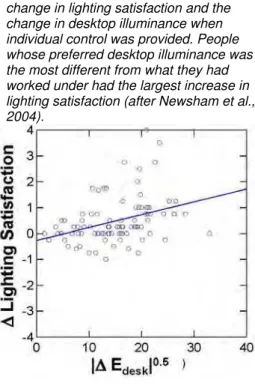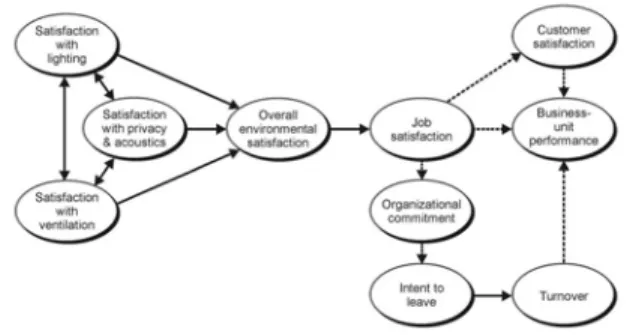Publisher’s version / Version de l'éditeur:
Lighting Design + Application : LD + A, 38, March 3, p. 22, 24, 26, 28, 2008-03-01
READ THESE TERMS AND CONDITIONS CAREFULLY BEFORE USING THIS WEBSITE.
https://nrc-publications.canada.ca/eng/copyright
Vous avez des questions? Nous pouvons vous aider. Pour communiquer directement avec un auteur, consultez la première page de la revue dans laquelle son article a été publié afin de trouver ses coordonnées. Si vous n’arrivez pas à les repérer, communiquez avec nous à PublicationsArchive-ArchivesPublications@nrc-cnrc.gc.ca.
Questions? Contact the NRC Publications Archive team at
PublicationsArchive-ArchivesPublications@nrc-cnrc.gc.ca. If you wish to email the authors directly, please see the first page of the publication for their contact information.
NRC Publications Archive
Archives des publications du CNRC
This publication could be one of several versions: author’s original, accepted manuscript or the publisher’s version. / La version de cette publication peut être l’une des suivantes : la version prépublication de l’auteur, la version acceptée du manuscrit ou la version de l’éditeur.
Access and use of this website and the material on it are subject to the Terms and Conditions set forth at
Research matters (individual control benefits people and employers)
Veitch, J. A.
https://publications-cnrc.canada.ca/fra/droits
L’accès à ce site Web et l’utilisation de son contenu sont assujettis aux conditions présentées dans le site LISEZ CES CONDITIONS ATTENTIVEMENT AVANT D’UTILISER CE SITE WEB.
NRC Publications Record / Notice d'Archives des publications de CNRC:
https://nrc-publications.canada.ca/eng/view/object/?id=b737685e-4115-444e-8c28-f4cedfdc127b https://publications-cnrc.canada.ca/fra/voir/objet/?id=b737685e-4115-444e-8c28-f4cedfdc127b
http://irc.nrc-cnrc.gc.ca
R e s e a r c h m a t t e r s ( i n d i v i d u a l c o n t r o l b e n e f i t s
p e o p l e a n d e m p l o y e r s )
N R C C - 5 0 3 2 1
V e i t c h , J . A .
A version of this document is published in / Une version de ce document se trouve dans: Lighting Design + Application: LD + A, v. 38, no. 3, March 2008, pp. 22, 24, 26, 28
The material in this document is covered by the provisions of the Copyright Act, by Canadian laws, policies, regulations and international agreements. Such provisions serve to identify the information source and, in specific instances, to prohibit reproduction of materials without written permission. For more information visit http://laws.justice.gc.ca/en/showtdm/cs/C-42
Les renseignements dans ce document sont protégés par la Loi sur le droit d'auteur, par les lois, les politiques et les règlements du Canada et des accords internationaux. Ces dispositions permettent d'identifier la source de l'information et, dans certains cas, d'interdire la copie de documents sans permission écrite. Pour obtenir de plus amples renseignements : http://lois.justice.gc.ca/fr/showtdm/cs/C-42
RESEARCH MATTERS (Individual control benefits people and employers)*
Jennifer A. Veitch, Ph.D.
NRC Institute for Research in Construction
Have I got a great deal for you! Save $2,500 on your next vehicle! We achieve this great price by removing unnecessary frills. No need to fiddle with knobs or switches to choose your temperature, turn on dashboard lights, adjust the radio station or volume. All cabin conditions come factory pre-set!
Would you buy this car? Probably not; who wants to listen to your teenager’s radio station at maximum volume during the 60-minute commute to work, with the heating on in July? Yet, this level of individual choice in environmental conditions is typical of the interior environments of many (most) workplaces, where people spend eight to 10 hours daily.
In a previous column (Newsham, 2007), my colleague Guy Newsham described research from the NRC Institute for Research in Construction showing the energy savings (approximately 10 percent) that may accrue from individual control over lighting. Here I will describe other benefits for people and their employers.
SATISFACTION BENEFITS
Both laboratory and field studies confirm what we would intuitively expect: People who have the ability to adjust their local light levels to suit their preferences are more satisfied with the lighting.
In our laboratory in Ottawa, we have twice demonstrated this. In one case, participants worked from morning until the mid-afternoon coffee break without having the opportunity to control their lighting (Newsham, Veitch, Arsenault, & Duval, 2004). There were four lighting designs and four starting illuminance levels. Regardless of the lighting design or the starting illuminance level, averaging over the 118 participants, there were benefits to having control: Ratings of the attractiveness of the room, overall environmental satisfaction, self-rated productivity, and satisfaction with lighting went up, and dissatisfaction with glare went down, during the final part of the day when individuals were given control over their lighting using a computer interface.
We teamed with Peter Boyce (then at the Lighting Research Center) to conduct two field simulation experiments for the Light Right Consortium (Boyce et al., 2006). One of the experiments examined individual control over workstation lighting. One experimental condition was a standard recessed parabolic-louvered luminaire with no individual controls. Seventy percent of the participants who worked for a day under that system reported that this lighting system was comfortable (a value that is consistent with previous LRC field research). As
Figure 1 shows, it is possible to satisfy
more of the people: Approximately eighty percent of participants rated a direct-indirect installation (no individual control) as comfortable. Approximately ninety
percent of people who worked under individually-controllable workstation-specific luminaires rated the lighting as comfortable.
Figure 1. Percentages of participants rating lighting systems as
comfortable in the Light Right Albany experiment.
* A version of this article was originally published in Lighting Design + Application, March 2008, vol. 38(3),
pp. 22, 24, 26, 28.
Research Matters: Individual control benefits people and employers / Page 2
Laboratory results are well and good, but what about satisfaction in real offices? We administered surveys on three occasions in an office in which most occupants had workstation-specific direct-indirect individually-controllable luminaires, whereas others worked under conventional recessed parabolic-louvered luminaires. The results were startlingly similar to the Light Right results: Approximately 70 percent of occupants rated the parabolic-louvered luminaires as comfortable; approximately 90 percent rated the controllable direct-indirect system as comfortable. (We are presently writing up these results for a journal submission.)
One question we have been asked concerns the possibility that one person’s lighting choices might distract the neighbors. We tracked the energy performance of the direct/indirect individually-controllable system for a year (Galasiu, Newsham, Suvagau, & Sander, 2007), and to our knowledge over that time there were no complaints related to distracting light level changes, neither because of the individual controls nor because of occupancy sensor or daylight harvesting actions by the control system.
PERFORMANCE BENEFITS
Many researchers have sought to demonstrate simple effects of individual control over lighting on clerical work and on simple intellectual tasks, generally without success (Boyce, Eklund, & Simpson, 2000; Newsham et al., in press; Newsham et al., 2004; Veitch & Newsham, 2000). Simply having the ability to control one’s workstation lighting does not appear to have a large effect on work performance, at least as measured in the laboratory over the short term.
However, in the Light Right Albany experiments, we found an intriguing interaction effect on a behavior that was not previously studied. Participants in that experiment worked for an eight-hour day in which they repeated sets of tasks between the conventional workday breaks. Over the course of the day, for participants without individual control, persistence on a very difficult (almost impossible) task declined. For participants with individual control, persistence stayed level over the workday (Boyce et al., 2006). This appears to be an effect of individual control on worker motivation, surely an important consideration for employers. We would like to see further investigation of this effect.
WHY IT WORKS
When people have control over their lighting, their lighting choices span a wide range. Some prefer high levels (high surface luminances, high desktop illuminances), and others prefer lower levels. In one of our laboratory experiments, we determined that for any given fixed desktop illuminance, no more than 50 percent of the occupants will be within 100 lux of their preferred illuminance . In that experiment, people who had worked for the day under lighting levels within 100 lx of their personal preferences were in a more pleasant mood and rated both the office and the lighting more highly than people whose workday had passed under conditions not to their liking. We believe that individual control improves satisfaction because it makes it possible for people to experience the lighting conditions that they happen to prefer.
Figure 2. The relationship between the
change in lighting satisfaction and the change in desktop illuminance when individual control was provided. People whose preferred desktop illuminance was the most different from what they had worked under had the largest increase in lighting satisfaction (after Newsham et al., 2004).
In the first laboratory experiment discussed above, we were able to test this hypothesis. We looked at the difference between the lighting conditions people worked under for the first part of the day and the lighting conditions they chose for themselves after the afternoon coffee break (Newsham et al., 2004). We already knew that on average, satisfaction improved after people were given control; we predicted that the satisfaction improvement would be greatest for the people with the largest difference between what they had before and what they chose for themselves. We observed the effect we predicted, as shown in Figure 2.
Research Matters: Individual control benefits people and employers / Page 3
ORGANIZATIONAL BENEFITS
The most frequently-asked question related to lighting quality research is “What can it do for my company’s productivity?” The implication is usually that it is not very important to improve anyone’s satisfaction if we can’t demonstrate simple benefits for work performance. This is a short-term view. There is mounting evidence that employees’ satisfaction with their work environments influences their job satisfaction (Veitch, Charles, Farley, & Newsham, 2007), and this in turn affects their commitment to their employers and the likelihood of leaving the organization (Carlopio, 1996). Organizations with
satisfied employees also have more satisfied customers and better business performance (Harter, Schmidt, & Hayes, 2002). Putting all this together we see a chain of relationships shown in Figure 3. Data that we are currently preparing for a journal submission supports this chain of relationships.
Figure 3. Linked relationships between the physical work
environment and organizational success.
WINNING ALL AROUND
As Guy Newsham showed in the October 2007 column (Newsham, 2007), individual control over lighting yields energy savings. In this column, I have shown that individual control also benefits individuals, increasing their satisfaction with lighting because it gives them the opportunity to experience the conditions that suit their individual preferences. Organizations that provide individual lighting control to their employees can win in both directions, with reduced energy bills and environmental impact and improved organizational outcomes related to more satisfied employees.
REFERENCES
Boyce, P. R., Eklund, N. H., & Simpson, S. N. (2000). Individual lighting control: Task performance, mood, and illuminance. Journal of the Illuminating Engineering Society, 29(1), 131-142.
Boyce, P. R., Veitch, J. A., Newsham, G. R., Jones, C. C., Heerwagen, J., Myer, M., et al. (2006). Lighting quality and office work: Two field simulation experiments. Lighting Research and Technology,
38(3), 191-223.
Carlopio, J. R. (1996). Construct validity of a physical work environment satisfaction questionnaire.
Journal of Occupational Health Psychology, 1, 330-344.
Galasiu, A. D., Newsham, G. R., Suvagau, C., & Sander, D. M. (2007). Energy saving lighting control systems for open-plan offices: a field study . Leukos, 4(1), 7-29.
Harter, J. K., Schmidt, F. L., & Hayes, T. L. (2002). Business-unit-level relationship between employee satisfaction, employee engagement, and business outcomes: A meta-analysis. Journal of Applied
Psychology, 87(2), 268-279.
Newsham, G. R. (2007, October). Research matters (Comparing individual dimming control to other control options in offices). Lighting Design + Application, 37(10), pp. 24, 26, 28. Available at: http://irc.nrc-cnrc.gc.ca/pubs/fulltext/prac/nrcc50090/.
Newsham, G. R., & Veitch, J. A. (2001). Lighting quality recommendations for VDT offices: A new method of derivation. Lighting Research and Technology, 33, 97-116.
Newsham, G. R., Veitch, J. A., Arsenault, C., & Duval, C. (2004). Effect of dimming control on office worker satisfaction and performance. In Proceedings of the IESNA Annual Conference, Tampa,
FL, July 26-28, 2004 (pp. 19-41). New York: IESNA.
Veitch, J. A., Charles, K. E., Farley, K. M. J., & Newsham, G. R. (2007). A model of satisfaction with open-plan office conditions: COPE field findings. Journal of Environmental Psychology, 27(3), 177-189.
Veitch, J. A., & Newsham, G. R. (2000). Exercised control, lighting choices, and energy use: An office simulation experiment. Journal of Environmental Psychology, 20, 219-237.
Research Matters: Individual control benefits people and employers / Page 4
Jennifer Veitch, PhD, Fellow IESNA, is a senior research officer at the National
Research Council Canada Institute for Research in Construction (NRC-IRC). She's best
known for her research on lighting quality, and her contributions to Chapter 10, Quality of the Visual Environment, in the IESNA Lighting Handbook, and more recently for research into environmental and job satisfaction in open-plan offices. She is active in several professional associations including CIE, where she is secretary of Division 3 (Interior Lighting and Lighting Design), and vice president of the Canadian National Committee. Contact her at jennifer.veitch@nrc-cnrc.gc.ca.


